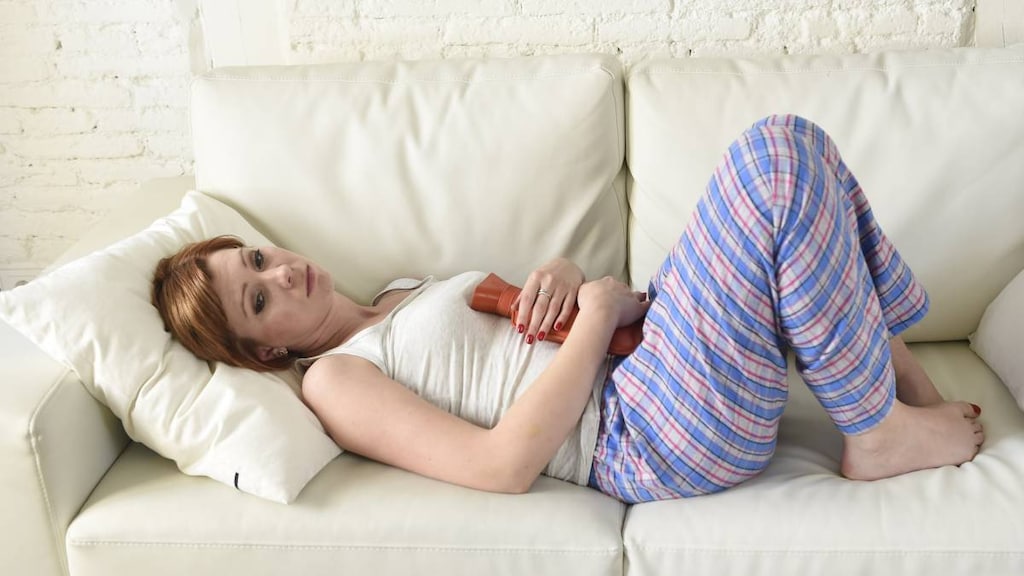How to Stop Period Pain: Top Tips to Try

Many women and girls experience menstrual cramps. In fact, pain from your period, called primary dysmenorrhea, is the most common gynecologic condition in women.
If you experience pain, you are not alone, though the range of pain experienced during menstruation can vary. For some, period pain can be more of an annoyance while others may be struck with intense pain that keeps them in bed.
The pain comes from the cramping that occurs by the muscles squeezing the uterus during menstruation. This process is triggered by a high level of the hormone called prostaglandin. However, when a girl or woman has period pain, it’s important to rule out other conditions that could be causing this pain, such as uterine fibroids, pelvic inflammatory disease (PID) and endometriosis. Pain not caused by these conditions tends to become less severe as a woman gets older and often diminishes after a woman has children.
What causes period pain?
According to the American College of Obstetricians and Gynecologists, more than half of all women who have menstrual periods suffer from painful periods. Doctors categorize the pain as one of two types:
Primary dysmenorrhea: This is what is commonly referred to as menstrual cramps or normal period pain. It's caused by prostaglandins, which line the uterus. At the start of a woman’s period, the level of prostaglandins are very high, but decrease over several days as the uterus sheds its lining. Painful periods often start when a girl begins menstruating, but the pain generally decreases with age. Also, women who give birth might experience less pain in subsequent years.
Secondary dysmenorrhea: This type of pain is linked to a problem in a woman’s reproductive system. Though the pain of primary dysmenorrhea starts in a girl’s teen years and may lessen over time, the pain in secondary dysmenorrhea doesn’t appear until later in a woman’s life and may increase as she gets older.
Though both primary and secondary dysmenorrhea can cause painful periods, primary dysmenorrhea is what most women refer to as normal menstrual cramps, and secondary dysmenorrhea can mean there’s a serious underlying medical issue causing the pain. This could be endometriosis, which affects about 10 percent of American women of childbearing age and can affect fertility. Or, the underlying issue could be fibroids or pelvic inflammatory disease.
10 ways to treat period pain
1. Exercise
It may sound counterintuitive to exercise if you’re experiencing menstrual cramps, but studies have shown that exercise may actually help alleviate the pain. You can try less impactful types of physical activity like meditation or stretching, or simply participate in your favorite activity like running, playing tennis or swimming. Yoga may also help with pain, especially poses such as fish, cat, cow and cobra may be beneficial. Ideally, do them after a warm bath or hot shower, when your muscles are warm.
In addition to helping to alleviate pain, exercise can help with bloating by reducing extra water weight. It can also help release endorphins, which are often called the “feel-good” hormones because they improve your mood and make you feel better.
2. Apply heat
Your grandmother or mother may have passed down the home remedy of putting a heating pad or hot water bottle on your lower abdomen to take away period pain. Some studies have also shown that this could be more than simply an old wives’ tale, finding that the use of heat therapy can be effective. Besides using a heating pad or hot water bottle, heat therapy also includes taking a hot bath or shower.
The heat reduces the muscle tension and relaxes the abdominal muscles, which then reduces the pain that has been caused by muscle spasms. In addition, heat has been shown to increase blood circulation. This helps alleviate bloating and swelling, which reduces the pain caused by nerve compression.
3. Take dietary supplements
Natural supplements may help with painful periods. Talk to your doctor before taking them to make sure they don’t interfere with any medications that you may be taking or any medical conditions you may have. Though there's not a great deal of scientific evidence, some studies have found that women taking certain supplements have less menstrual pain. These include:
-
Omega-3 fatty acids: Found in fish oil, these fatty acids may help reduce inflammation.
-
Calcium citrate: This is the form of calcium most easily absorbed by the body.
-
Calcium: Helps maintain muscle tone, which may help reduce menstrual pain.
-
Vitamin D: This vitamin may help reduce inflammation.
-
Vitamin E
-
Magnesium
4. Avoid alcohol
Alcohol can make menstrual cramps worse, and lead to more bloating and feelings of fullness.
5. De-stress
Psychological stress can increase not only the risk but the severity of menstrual cramps. Alleviating this stress may do the opposite. Try breathing exercises, listening to calming music, taking a walk and not engaging in school or office politics.
6. Sleep
Another important way to alleviate painful periods and accompanying symptoms, like moodiness and fatigue, is by getting enough sleep every night. Make sure you go to bed and wake up at the same time — even on weekends. This has shown to be beneficial for overall health and can be especially important during your menstrual cycle.
7. Try acupuncture
Some studies have shown that acupuncture may relieve menstrual cramps in women, especially when compared with no treatment or treatment with non-steroidal anti-inflammatory drugs (NSAIDs). Acupuncture is when thin needles are inserted into a person’s body at strategic points and then stimulated.
8. Opt for acupressure
Acupressure is another approach to possibly alleviating menstrual cramps. It’s when pressure points are used to alleviate pain and other symptoms in the body. Unlike acupuncture, which uses needles, acupressure uses touch therapy.
9. Take herbal medicine
Certain herbal products may also help. Some researchers think that the herbs act like estrogen in the body. For example, fennel is thought to help with nausea and weakness during menstruation, turmeric helps lower inflammation and evening primrose oil is thought to help relieve symptoms of premenstrual syndrome (PMS).
10. Take medications
Over-the-counter medications can also help with painful periods. Your doctor may suggest NSAIDs such as ibuprofen (Advil, Motrin) or naproxen sodium (Aleve).
Article references
- American College of Obstetricians and Gynecologists, Dysmenorrhea: Painful Periods https://www.acog.org/Patients/FAQs/Dysmenorrhea-Painful-Periods?IsMobileSet=false
- Mayo Clinic, Home Remedies, Managing menstrual cramps https://newsnetwork.mayoclinic.org/discussion/home-remedies-managing-menstrual-cramps/
- Seattle Children’s Hospital, Menstrual Cramps https://www.seattlechildrens.org/conditions/a-z/menstrual-cramps/
- National Center for Biotechnology Information, U.S. National Library of Medicine, Effects of exercise participation on menstrual pain and symptoms https://www.ncbi.nlm.nih.gov/pubmed/9525266
- Nationwide Children’s Hospital, Yoga Exercises and Menstrual Cramps https://www.nationwidechildrens.org/family-resources-education/health-wellness-and-safety-resources/helping-hands/yoga-exercises-and-menstrual-cramps
- National Center for Biotechnology Information, U.S. National Library of Medicine, Heat therapy for primary dysmenorrhea: A systematic review and meta-analysis of its effects on pain relief and quality of life https://www.ncbi.nlm.nih.gov/pmc/articles/PMC6214933/
- Penn State Hershey, Milton S. Hershey Medical Center, Menstrual pain http://pennstatehershey.adam.com/content.aspx?productid=107&pid=33&gid=000052
- Johns Hopkins Medicine, Dysmenorrhea https://www.hopkinsmedicine.org/health/conditions-and-diseases/dysmenorrhea
- American College of Obstetricians and Gynecologists, Premenstrual Syndrome (PMS) https://www.acog.org/Patients/FAQs/Premenstrual-Syndrome-PMS?IsMobileSet=false
- National Center for Biotechnology Information, U.S. National Library of Medicine, The efficacy and safety of acupuncture in women with primary dysmenorrhea: A systematic review and meta-analysis https://www.ncbi.nlm.nih.gov/pubmed/29879061
- Mayo Clinic, Menstrual Cramps https://www.mayoclinic.org/diseases-conditions/menstrual-cramps/diagnosis-treatment/drc-20374944
- Sleep.org, Sleep well even with pre-menstrual and menstrual symptoms https://www.sleep.org/articles/how-to-sleep-better-during-period/
- Institute for Quality and Efficiency in Health Care, InformedHealth.org: Period pain, overview https://www.ncbi.nlm.nih.gov/books/NBK279324/

